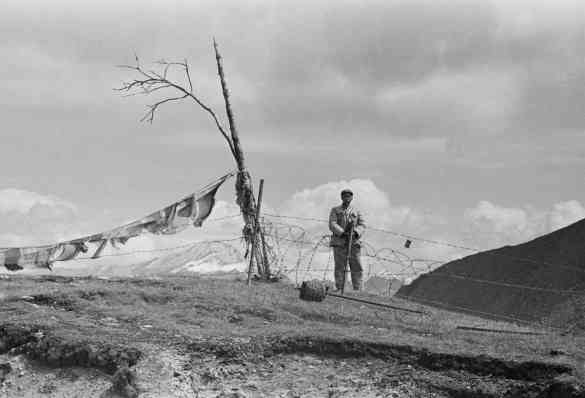India responded by protesting the Chinese construction because it violated one of the principles of the 1954 Panchsheel Agreement, which states that both countries are required to respect each other's territorial integrity and sovereignty. The claim action then ended with clashes between the respective armies in the border region. Since then, relations between India and China have deteriorated.
The first battle took place in 1959 but it culminated on October 20, 1962. The Chinese military launched a massive offensive with 80,000 Chinese soldiers against a minimally prepared Indian military force. This act of war took place in a key area more than 600 miles east and west of India. China came out as the superior party and managed to control Aksai Chin in the western sector and successfully attacked Indian military forces south of the Namka river.
In this conflict, India permanently lost territory estimated at around 43,000 km2 and more than 3,000, soldiers were killled. The 1962 incident then became the root of other physical confrontations, namely, the Nathu La and Cho La Clashes (1967), Tulung La Ambush (1975), Doklam Plateau Conflict (2017), Ladakh Confrontation (2020) and other acts of provocation.

2. Nathu La and Cho La Clash (1967)
In 1967, Indian and Chinese troops faced off in the eastern Himalayas. They were at dispute over the boundary fence at Nathu La, a strategic pass in Sikkim The Indians wanted to build an iron barrier as a defense against Chinese attacks to the Chinese, this seemed like arrogant aggression, coming from an army they had defeated five years earlier.
The battle between the two countries finally erupted on September 11, 1967 beginning with months of allegations from both sides of attacks and territorial intrusions.
In this clash, the Indian Army was able to repulse the Chinese. According to the record of the clash written by Major General Sheru Thaphyal, who was stationed in Sikkim at the time, the Indian side lost more than 70 soldiers while Chinese casualties were more than 400. The second round of clashes erupted at Cho La on October 1, 1967. In 1967 Sikkim was a protectorate of India and joined the Indian union as a state in 1975. China recognized the border in the Sikkim sector in 2003.

3. Tulung La ambush (1975)
Tulung La is part of the eastern sector of the border between India and China. In October 1975, Chinese People's Liberation Army troops conducted a patrol along the LAC (Line of Actual Control) in Arunachal Pradesh, leading to the death of four Indian soldiers. No Chinese casualties were reported. In this context, the clash at Tulung La in 1975 can be seen as part of a long-running conflict between India and China that stems from disagreements over border areas and strategic interests










